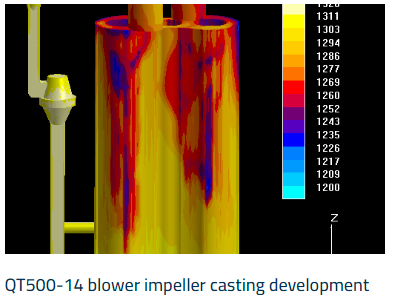The design and development evolution had to be speedy.
As illustrated above, prototyping benefits the automotive industry to a great extent, enabling them to fasten up the design and manufacturing phases of vehicle creation. Until now, developing a new vehicle model has typically required up to a few years from concept to production. With the modern prototyping technologies used by most companies, this timeline is significantly reduced. For example, 3D printing and digital modeling can produce and test parts in days, or even hours. This not only accelerates the process but it also boosts design flexibility and the variability of fast-changing feedback.
Lower Costs and Enhanced Efficiency
Prototyping has revolutionized the financial component of automotive design. Complex geometries that once had to be machined with expensive molds and tools can be easily produced in the early stages of development. The usage of prototypes therefore saves automotive companies up to 15%, 50% in production costs. Additionally, the use of prototyping tools has been associated with a 60% decrease in the duration of total projects, leading to faster time-to-market in an industry where this is extremely important.
Greater Flexibility and Customer Experience
Another field which had been covered by the prototyping is the customizations. Consumers, meanwhile, are looking for cars tailored to their own needs and desires. Technologies such as additive manufacturing will allow auto makers to produce uniquely personalized parts on demand, without the expense of having large manufacturing lines host them. All this capability adds to customer satisfaction and stickiness because buyers sense more value in products tailored to their needs.

SUSTAINABILITY & MATERIALS R&D
In the automotive industry, prototyping too is pushing sustainability. Fewer scrap materials from testing and modifying designs lead to a more efficient use of resources. Prototyping also allows the opportunity to investigate potential new lightweight materials that could lead to greater fuel economy in vehicles. With composites the cost is an issue as well as the time it takes to make the parts and materials, which can now be less time and with great cost (comparing to a traditional material).
Examples and Applications of Case Studies
Prototyping bears quite a few examples in the automotive industry, with several front runners showcasing how things are done. Tesla Inc., for example, exploits rapid prototyping extensively to help speed up the development and manufacturing of its electric vehicles. It has also enabled Tesla to launch new models faster than traditional automakers. BMW, too, employs prototyping on vehicle interiors to refine the ergonomics and functionality, and consequently their interiors are more comfortable and their user interfaces are better-designed.
So as the realization of the role of prototyping in the automotive Industry dawned on the world, it redefined the way we look at designing altogether and has had a major influence on design aspects to production to cost efficiency to environmental sustainability, you name it! With the onset of advancements taking place in this technology, the magnitude of impact is only going to grow—resulting into smarter and cost-effective automotive products for consumers.